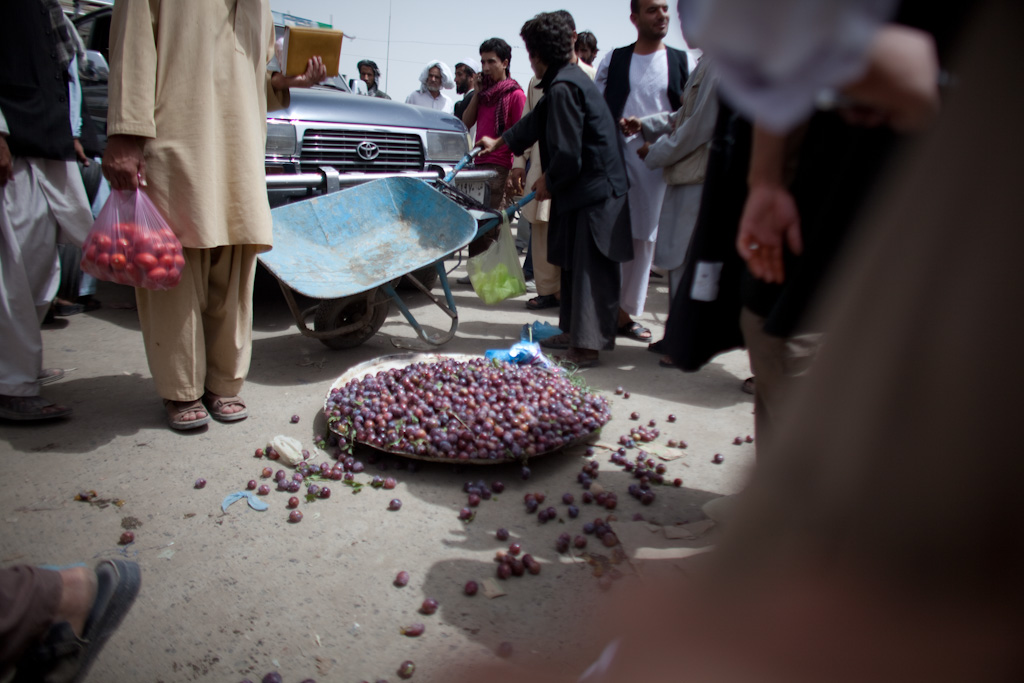I’ve had the very good fortune in the past month to witness three very different accidents: two colliding motorbikes in China; two cars in Afghanistan; and a car and a bicycle in Germany. The photo above – a little ding in the market – during Ramadan/Ramazan when midday, parched tempers can be more frayed, things can easily escalate.
Watching the aftermath of a traffic accident unfold is a form of street theatre so compelling you could sell tickets – human emotion so raw and bloodied that everyone, except perhaps those now under the influence of adrenaline, recognising that something significant is at stake. Blame is yet to be assigned – and the cost of that blame may be significant.
A personal injury lawyer friend of mine reminded me that blame is hardly ever absolutely assigned to one party or the other, because a vehicle accident typically takes two or more breaking the road/social rules. Which results in the crowd looking to see the real-world drama play out.
The most enjoyable accident of the three was on the road outside our Shanghai Design studio involving a motorbike going the wrong way up a one-way street (actually a common occurrence) hitting a motorbike that had just joined the flow of the traffic. The impact drew the attention of passers-by and the folks that seem to spend an inordinate amount of time just hanging out in the neighbourhood; with your truly perched on low wall nearby. No-one was hurt; but the wing of one motorbike had dented and prised loose from the frame and the argument centered on road rules (its a one way street) versus rules of the road (it’s OK for bicycles, e-bikes and motorbikes to go the wrong way up the one way street). For ten minutes the discussion raged with body language ranging from finger-jabbed-into-face; to the it-wasn’t-me palms down; to the critical moment when one driver physically touches the damage on the other vehicle – the act of tangible acknowledgement being the signature on the social contract that assigns blame.
Earlier this year I attended the Forbes Future of Computing workshop in San Francisco where we used various scenarios including a motorway car accident to think through how it might be different in the future. Whilst some thought the future of rubbernecking was to effectively shield the accident from view; my own take was that within certain boundaries it would be better to provide a better view – who is going to slow down when your heads up display and in-car entertainment system is combining drive-by footage in slow motion with live feeds from the site?
In countries where car insurance is the norm someone calls the police and the drivers wait for the authorities to turn up and ink an accident report. But on the jammed streets of Afghanistan the solution is surprisingly elegant: the person who is most obviously to blame accepts guilt and agrees to fix the car – as long as both drivers go directly to his friend’s workshop who’ll carry out the repairs.
